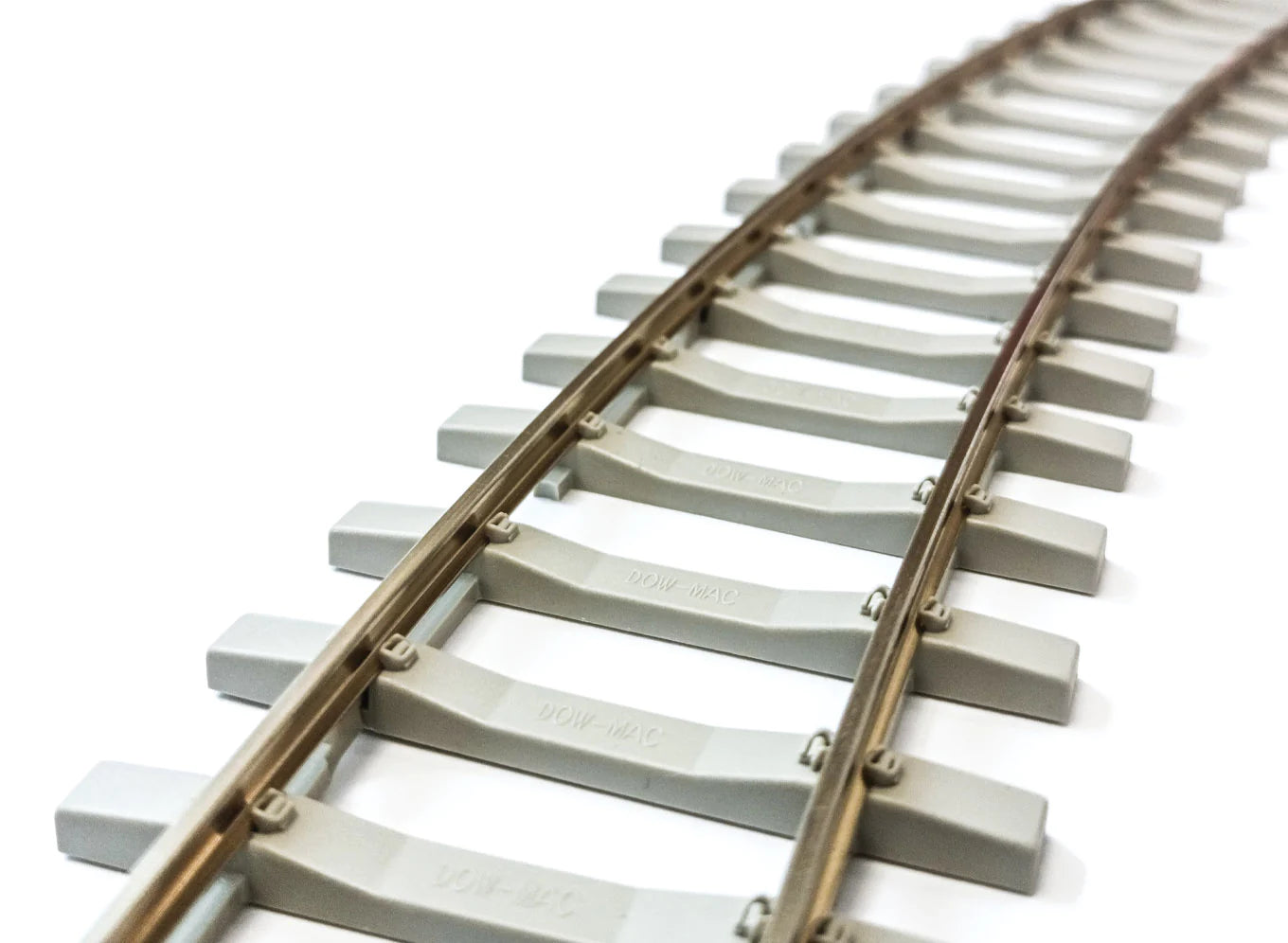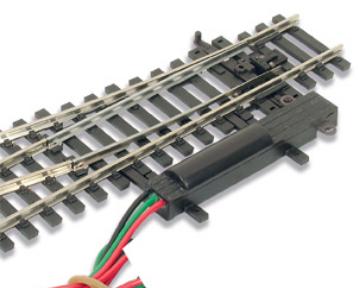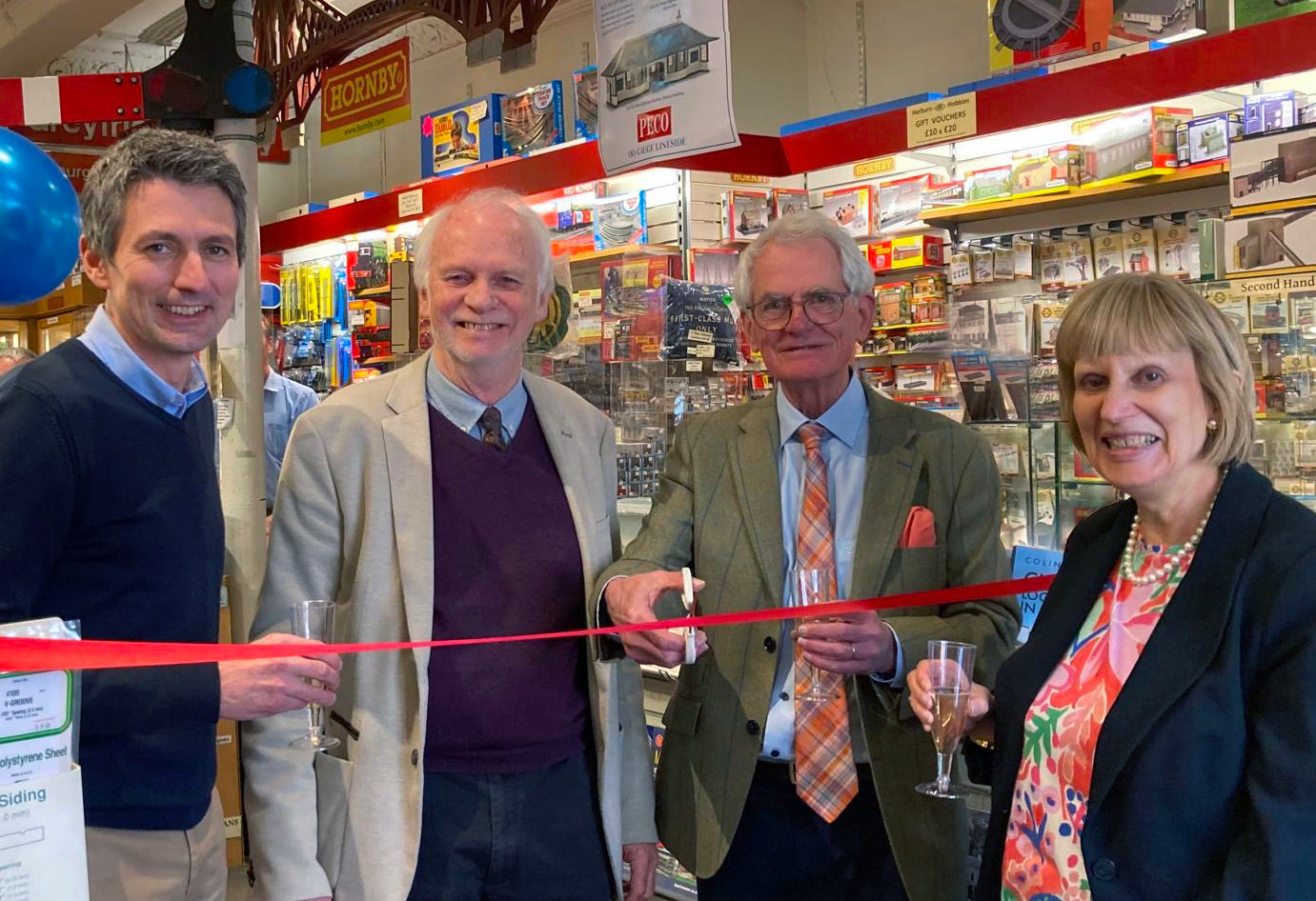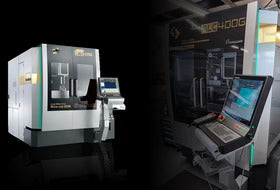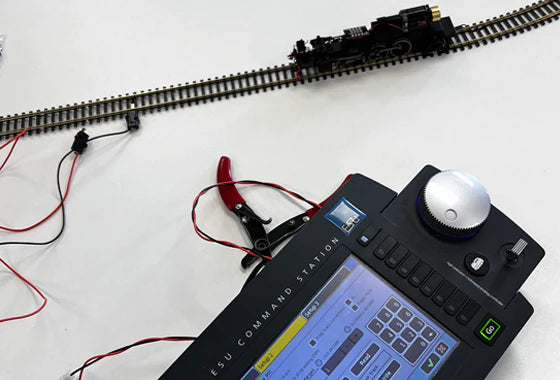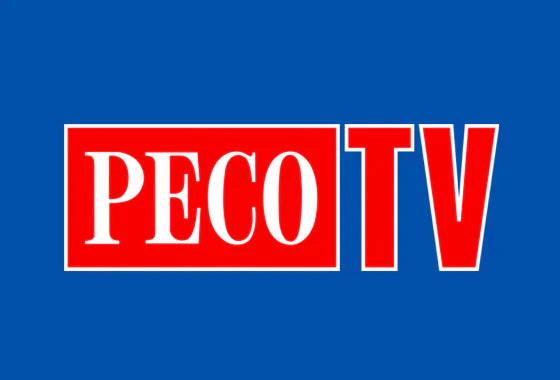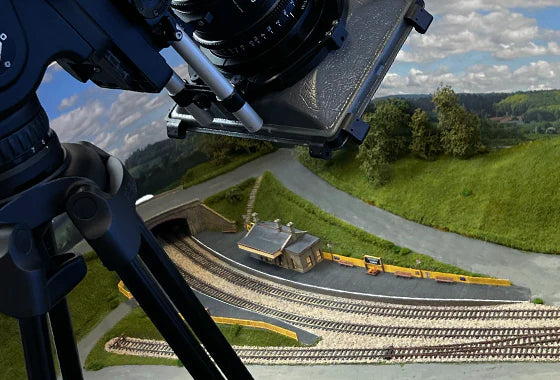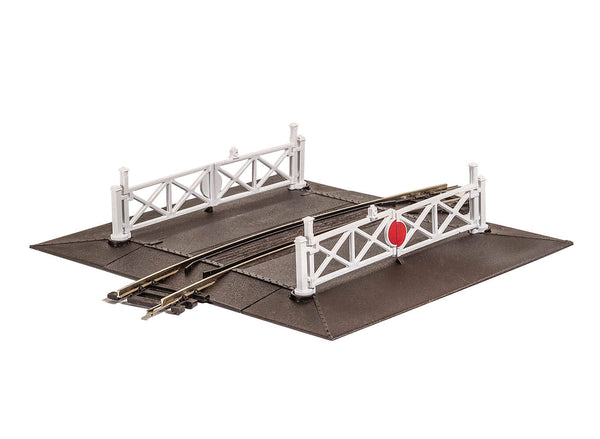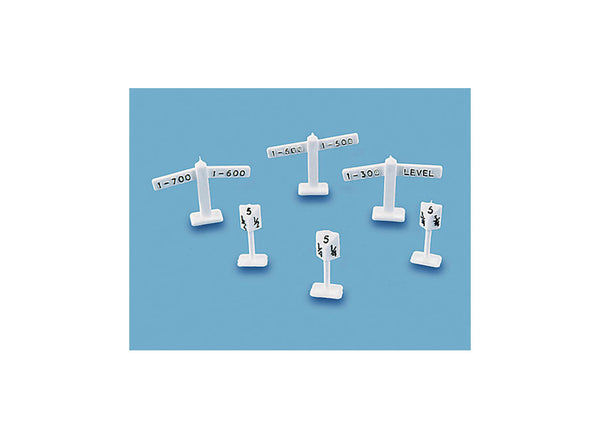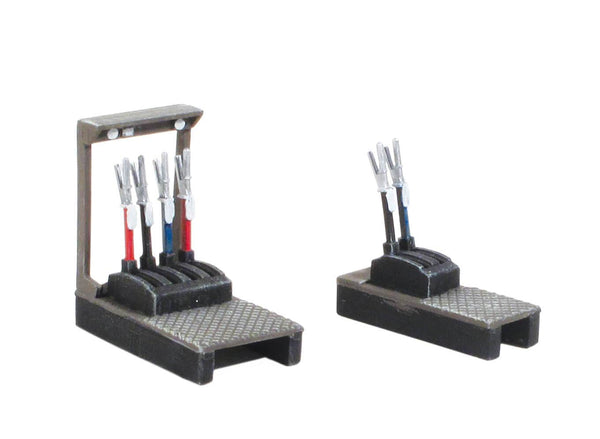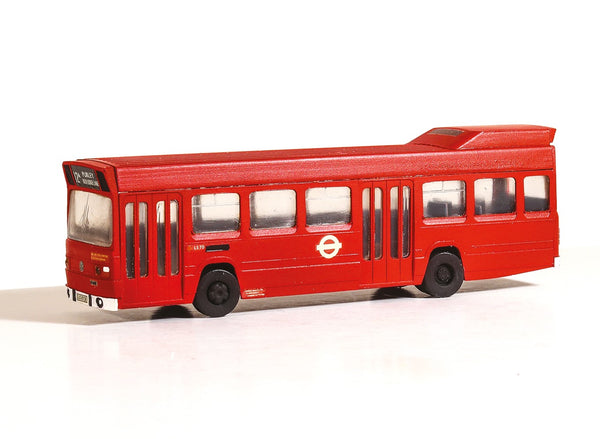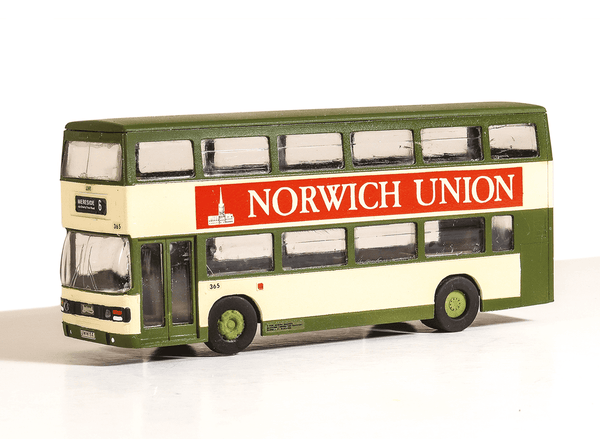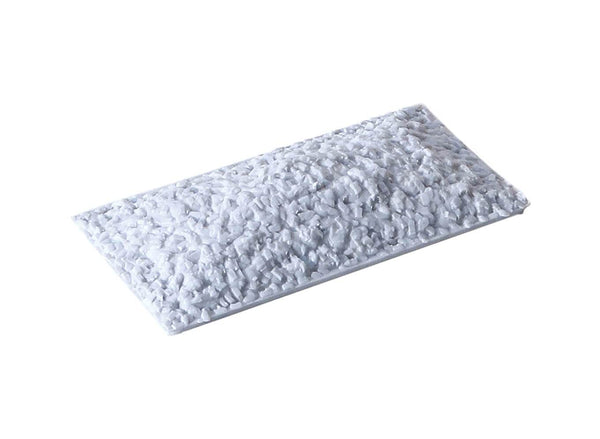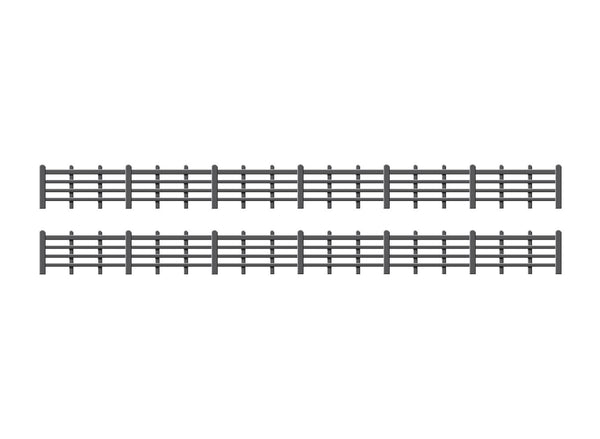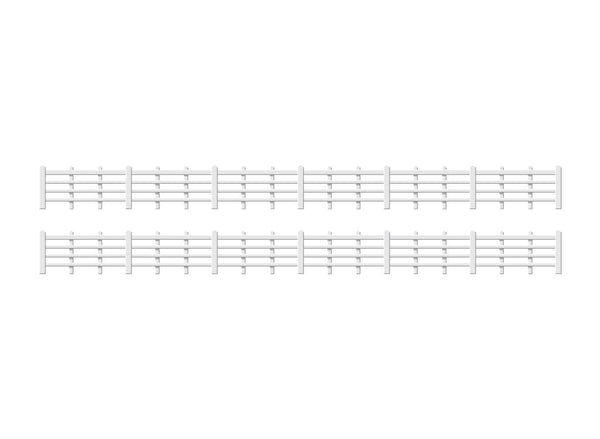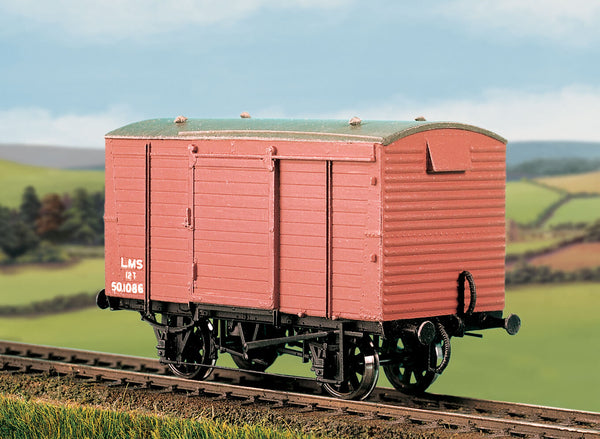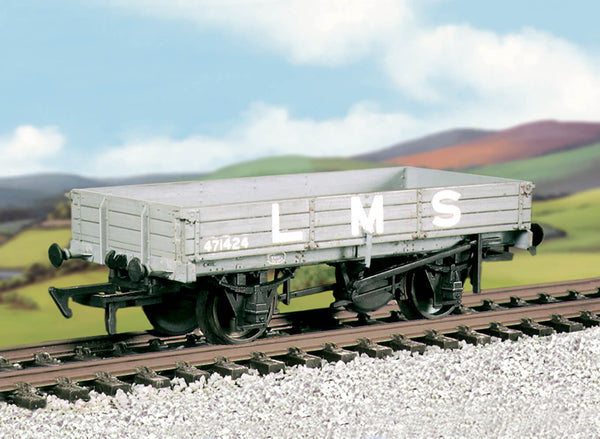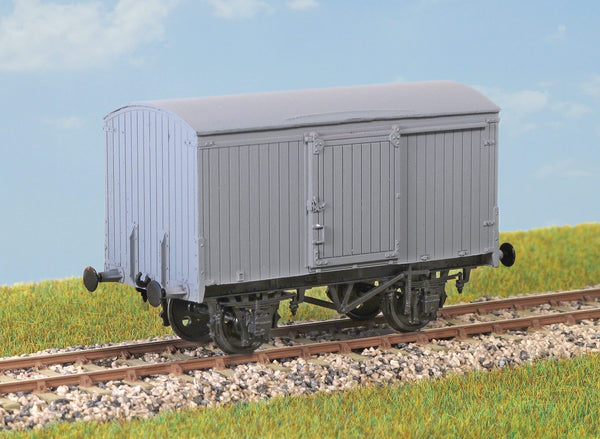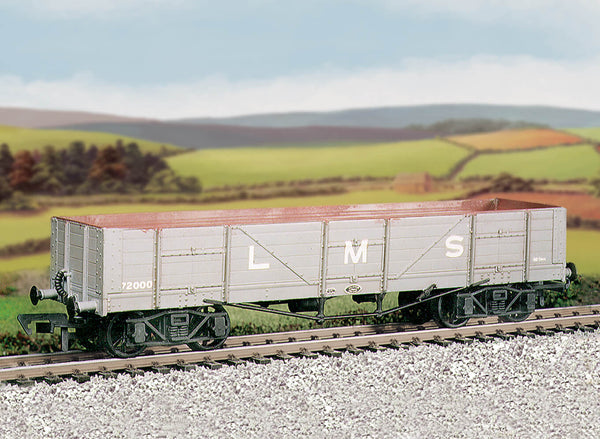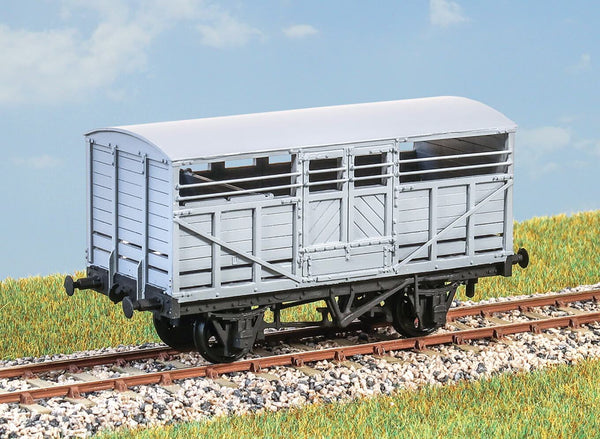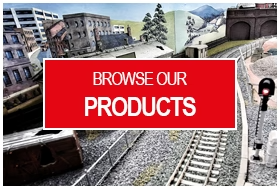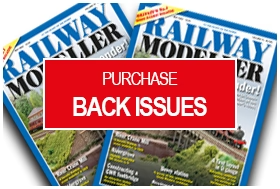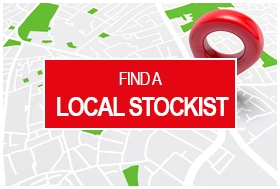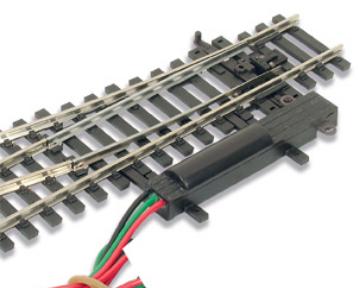BROWSE PECO PRODUCTS
Browse through our complete product portfolio.
768 Products Found
Level Crossing, 2nd Radius
The Setrack Level Crossings can be positioned virtually anywhere on your layout. There are four radii available in curved crossings, plus the straight crossing and add on unit . These simply clip together so that you can cross up to four tracks on a curve and any number of tracks on the straight. They are supplied with traditional gates as standard, LK-51 modern barriers can be substituted if required.
PECO Setrack 00 Gauge Code 100 - Unit trackage System is a high quality rigid unit trackage system suitable for all popular brands of 00 gauge model trains.
Being fully compatible with the Code 100 PECO Streamline range, it need never be discarded as your layout develops.
The solid nickel silver rails are integrally moulded into the sleeper bases for maximum realism and strength. Turnouts are fitted with an over-centre spring for immediate use, no extra levers necessary.
Lever Ground Frames
A kit depicting the levers necessary to control isolated industrial and country sidings; contains 2 frames as illustrated. Don't forget the point rodding (SS89 and 90); catch points, ground signals/signals and loading gauges where appropriate. Supplied with pre-coloured parts although painting and/or weathering can add realism; glue is required to complete this model.
Leyland National Single Decker Bus, Blackpool
The Leyland National bus was built in Workington, Cumbria, between 1972 and 1985, this project being a collaboration between British Leyland and the National Bus Company. It was a successful venture, with thousands built, and also exported to many countries around the world, including Australia, the Netherlands, Jamaica, Trinidad & Tobago, and the largest export shipment, 450 buses to Venezuela! Very few remain in service in the UK, but over 100 are preserved. Another interesting fact, and a railway one, is that the bus body design, and components, were adapted to be used in the British Rail Class 141, 142 and 155 diesel multiple units. Kit contains pre-coloured parts and transfers; requires glue and detail painting to complete.
Leyland National Single Decker Bus, Greater Manchester
The Leyland National bus was built in Workington, Cumbria, between 1972 and 1985, this project being a collaboration between British Leyland and the National Bus Company. It was a successful venture, with thousands built, and also exported to many countries around the world, including Australia, the Netherlands, Jamaica, Trinidad & Tobago, and the largest export shipment, 450 buses to Venezuela! Very few remain in service in the UK, but over 100 are preserved. Another interesting fact, and a railway one, is that the bus body design, and components, were adapted to be used in the British Rail Class 141, 142 and 155 diesel multiple units. Kit contains pre-coloured parts and transfers; requires glue and detail painting to complete.
Leyland National Single Decker Bus, Green Vari-kit
The Leyland National bus was built in Workington, Cumbria, between 1972 and 1985, this project being a collaboration between British Leyland and the National Bus Company. It was a successful venture, with thousands built, and also exported to many countries around the world, including Australia, the Netherlands, Jamaica, Trinidad & Tobago, and the largest export shipment, 450 buses to Venezuela! Very few remain in service in the UK, but over 100 are preserved. Another interesting fact, and a railway one, is that the bus body design, and components, were adapted to be used in the British Rail Class 141, 142 and 155 diesel multiple units. Kit contains pre-coloured parts and transfers; requires glue and detail painting to complete.
Leyland National Single Decker Bus, London Country
The Leyland National bus was built in Workington, Cumbria, between 1972 and 1985, this project being a collaboration between British Leyland and the National Bus Company. It was a successful venture, with thousands built, and also exported to many countries around the world, including Australia, the Netherlands, Jamaica, Trinidad & Tobago, and the largest export shipment, 450 buses to Venezuela! Very few remain in service in the UK, but over 100 are preserved. Another interesting fact, and a railway one, is that the bus body design, and components, were adapted to be used in the British Rail Class 141, 142 and 155 diesel multiple units. Kit contains pre-coloured parts and transfers; requires glue and detail painting to complete.
Leyland National Single Decker Bus, London Transport
The Leyland National bus was built in Workington, Cumbria, between 1972 and 1985, this project being a collaboration between British Leyland and the National Bus Company. It was a successful venture, with thousands built, and also exported to many countries around the world, including Australia, the Netherlands, Jamaica, Trinidad & Tobago, and the largest export shipment, 450 buses to Venezuela! Very few remain in service in the UK, but over 100 are preserved. Another interesting fact, and a railway one, is that the bus body design, and components, were adapted to be used in the British Rail Class 141, 142 and 155 diesel multiple units. Kit contains pre-coloured parts and transfers; requires glue and detail painting to complete.
Leyland National Single Decker Bus, Red Vari-kit
The Leyland National bus was built in Workington, Cumbria, between 1972 and 1985, this project being a collaboration between British Leyland and the National Bus Company. It was a successful venture, with thousands built, and also exported to many countries around the world, including Australia, the Netherlands, Jamaica, Trinidad & Tobago, and the largest export shipment, 450 buses to Venezuela! Very few remain in service in the UK, but over 100 are preserved. Another interesting fact, and a railway one, is that the bus body design, and components, were adapted to be used in the British Rail Class 141, 142 and 155 diesel multiple units. Kit contains pre-coloured parts and transfers; requires glue and detail painting to complete.
Leyland Olympian Double Decker Bus, Blackpool Corporation
The Leyland Olympian entered service with the National Bus Company (N.B.C.) in 1981, as a replacement for the Bristol VRT. Shortly after this, Olympians entered service with many provincial operators. London Transport ordered its' first batch in 1984.
Initial batches of the Olympian featured a Leyland chassis, powered by a Gardner 6 LXB engine with an Eastern Carriage Works (E.C.W.) body. Later batches used a Leyland built body and those produced more recently had an Optare built body. Outwardly these three bodies are basically identical and this kit is based on this type of Olympian.
They were exported to Greece, Hong Kong, the USA, Canada and Singapore. Kit contains pre-coloured parts and transfers; requires glue and detail painting to complete.
Leyland Olympian Double Decker Bus, London Buses Metro
The Leyland Olympian entered service with the National Bus Company (N.B.C.) in 1981, as a replacement for the Bristol VRT. Shortly after this, Olympians entered service with many provincial operators. London Transport ordered its' first batch in 1984.
Initial batches of the Olympian featured a Leyland chassis, powered by a Gardner 6 LXB engine with an Eastern Carriage Works (E.C.W.) body. Later batches used a Leyland built body and those produced more recently had an Optare built body. Outwardly these three bodies are basically identical and this kit is based on this type of Olympian.
They were exported to Greece, Hong Kong, the USA, Canada and Singapore. Kit contains pre-coloured parts and transfers; requires glue and detail painting to complete.
Leyland Olympian Double Decker Bus, London Buses Riverside
The Leyland Olympian entered service with the National Bus Company (N.B.C.) in 1981, as a replacement for the Bristol VRT. Shortly after this, Olympians entered service with many provincial operators. London Transport ordered its' first batch in 1984.
Initial batches of the Olympian featured a Leyland chassis, powered by a Gardner 6 LXB engine with an Eastern Carriage Works (E.C.W.) body. Later batches used a Leyland built body and those produced more recently had an Optare built body. Outwardly these three bodies are basically identical and this kit is based on this type of Olympian.
They were exported to Greece, Hong Kong, the USA, Canada and Singapore. Kit contains pre-coloured parts and transfers; requires glue and detail painting to complete.
Limewashed Stone
These sheets are invaluable for scratchbuilding, saving many hours of repetitive work creating the various surface patterns and textures. They are the same as those used in the Craftsman kits to make extension work easier. Each pack contains 4 sheets 130mm x 75mm of injection moulded styrene approximately 2mm thick, making them rigid enough to be self supporting.
Lineside Fencing, Black
Supplied with pre-coloured parts although painting and/or weathering can add realism; glue is required to complete this model. This pack contains 860mm of countryside fencing.
Lineside Fencing, White
Supplied with pre-coloured parts although painting and/or weathering can add realism; glue is required to complete this model. This pack contains 860mm of countryside fencing.
Lions Head Fountain
The quintessential lion's mask is faithfully reproduced in this stone built fountain which would be at home on any village green.
Size (mm) 22 x 17 x 26. The Harburn Hamlet range of painted resin accessories provide interesting scenic details to go around the station and streets of your layout.
LMS 12ton Ventilated Box Van Kit
20,000 of this simple, workmanlike design were built between 1934 and 1944 for carrying perishable goods. Transfers are included; glue and paints are required to complete this model.
LMS 3 Plank Medium Open Wagon Kit
A standard design with drop sides to transport general merchandise, farm equipment etc. 6,600 were built between 1935 and 1947. Transfers are included; glue and paints are required to complete this model.
LMS 6ton Fish Wagon
75 of these vans (diagram 2059) were built in 1941 for express fish traffic. They were usually marshalled in fish or passenger trains. Most lasted into the middle 1960s. These finely moulded plastic wagon kits come complete with pin point axle wheels and bearings. Glue and paint will be required, along with appropriate transfers. Additional parts to enable the vehicle to be modelled incorporating modifications made to the prototypes during their working life are included where appropriate.
LMS Bogie Iron Ore Wagon Kit
Originally built by the Caledonian Railway, these wagons were used for carrying ore. Transfers are included; glue and paints are required to complete this model.
LMS Cattle Wagon
The LMS built 2050 of these wagons (diagram 1661) between 1923 and 1926. They lasted in use until the early 1960s. These finely moulded plastic wagon kits come complete with pin point axle wheels and bearings. Glue and paint will be required, along with appropriate transfers. Additional parts to enable the vehicle to be modelled incorporating modifications made to the prototypes during their working life are included where appropriate.
LMS Distant Signal
Part of the Ratio 'Quick Assembly' family of signals. These allow you to make home and distant signals quickly and easily. They include signal operating wire and lever. This kit enables you to replicate an LMS Round Post Distant Signal. Glue and paints required to complete model.
LMS Home Signal
Part of the Ratio 'Quick Assembly' family of signals. These allow you to make home and distant signals quickly and easily. They include signal operating wire and lever. This kit enables you to replicate an LMS Round Post Home Signal. Glue and paints required to complete model.
